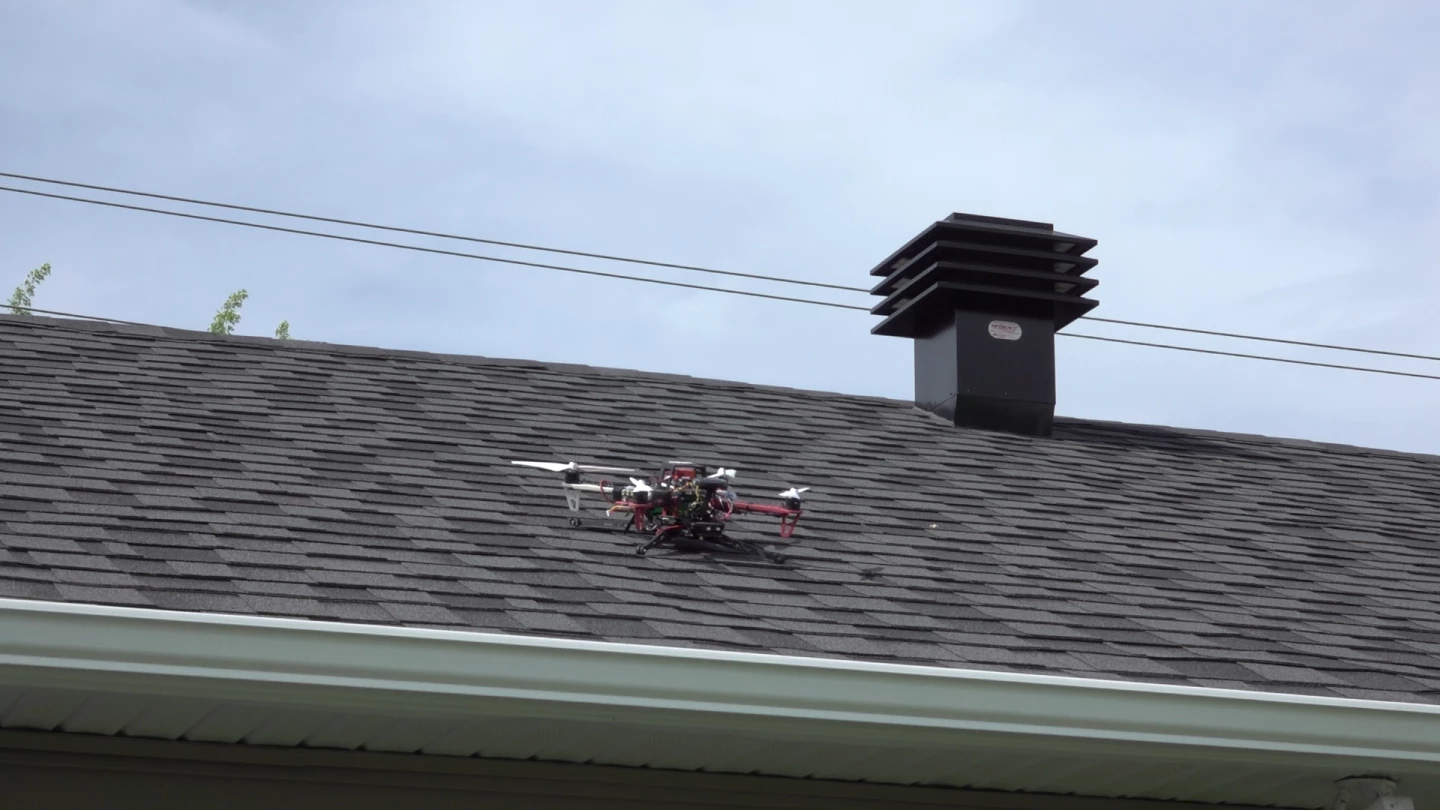Scientists working to expand the potential landing zones for drones have demonstrated a novel approach, enabling the aircraft to safely touch down on steep inclines. The technology builds on the team's previous work involving walls and lakes, and could enable drones to land on one of the more common surfaces in the urban environment.
Led by mechanical engineers at Canada's University of Sherbrooke, the research follows on from some previous, equally impressive landing solutions for drones demonstrated by the same team. In 2017, the scientists showed off a fixed-wing drone that could take off and land on water, designed to hop between lakes and recharge with solar power as it goes.
Later that year, the team demonstrated another fixed-wing drone that used a laser sensor to detect an oncoming wall during flight. It would then tilt upwards and use microfiber feet to latch onto the rough surface of the wall and suspension to absorb the kinetic energy of the impact. The drone could then remain fixed to the vertical wall until it was time to fire up its propellor for another flight.
The team's latest physics-defying landing technology was developed for quadcopter drones, which have difficulty landing on inclined surfaces due to their stiff landing gear. Specialized landing gear with lightweight friction shock absorbers was fitted to a DJI F450 drone to again absorb kinetic energy from the impact, while rapid thrust reversal capabilities enable it to land at some impressive inclines.

This was tested in a real-world, outdoor environment, with the drone successfully landing on surfaces with slopes of up to 60 degrees, and at speeds of up to 2.75 meters per second (9 ft/s). The team says the technology enables small drones to land on the types of rooftops typically seen around cities, while the higher landing speed will allow them to do so in emergency scenarios where precise control and sensing isn't always a possibility.
You can see the technology demonstrated in the video below, while the research was published in the journal IEEE Robotics and Automation Letters.






